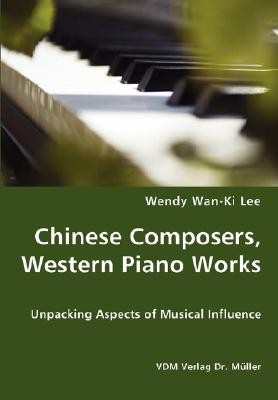
- We will send in 10–14 business days.
- Author: Wendy Wan-Ki Lee
- Publisher: VDM Verlag Dr. Mueller E.K.
- Year: 2007
- Pages: 148
- ISBN-10: 3836427680
- ISBN-13: 9783836427685
- Format: 17 x 24.4 x 0.8 cm, minkšti viršeliai
- Language: English
- SAVE -10% with code: EXTRA
Chinese Composers, Western Piano Works - Unpacking Aspects of Musical Influence (e-book) (used book) | bookbook.eu
Reviews
Description
During the past fifty years, many Chinese and other Asian composers have combined Western compositional techniques with their own musical heri-tages in their works. The prevalence of non-Western elements in con-temporary music complicates the idea of any one musical canon, since the meaning of such compositions now lies not only in one particular perfor-mance tradition but in diverse musical practices. This book begins to examine the above by investigating three solo piano works that synthesize various Chinese traditional practices and certain aspects of Western art music. Chapter 1 provides a brief overview of how this cultural-fusion phenomenon came about and questions the extent of existing methodologies. The next three chapters present theoretical analyses of specific compositions and are complemented by the author's interviews with their composers. The final chapter offers insights on the East-West musical interaction and beyond. This book is directed towards composers, performers, scholars, and other musicians who are interested in understanding compositions with an innovative blend of cultural forces.
EXTRA 10 % discount with code: EXTRA
The promotion ends in 23d.19:01:24
The discount code is valid when purchasing from 10 €. Discounts do not stack.
- Author: Wendy Wan-Ki Lee
- Publisher: VDM Verlag Dr. Mueller E.K.
- Year: 2007
- Pages: 148
- ISBN-10: 3836427680
- ISBN-13: 9783836427685
- Format: 17 x 24.4 x 0.8 cm, minkšti viršeliai
- Language: English English
During the past fifty years, many Chinese and other Asian composers have combined Western compositional techniques with their own musical heri-tages in their works. The prevalence of non-Western elements in con-temporary music complicates the idea of any one musical canon, since the meaning of such compositions now lies not only in one particular perfor-mance tradition but in diverse musical practices. This book begins to examine the above by investigating three solo piano works that synthesize various Chinese traditional practices and certain aspects of Western art music. Chapter 1 provides a brief overview of how this cultural-fusion phenomenon came about and questions the extent of existing methodologies. The next three chapters present theoretical analyses of specific compositions and are complemented by the author's interviews with their composers. The final chapter offers insights on the East-West musical interaction and beyond. This book is directed towards composers, performers, scholars, and other musicians who are interested in understanding compositions with an innovative blend of cultural forces.


Reviews